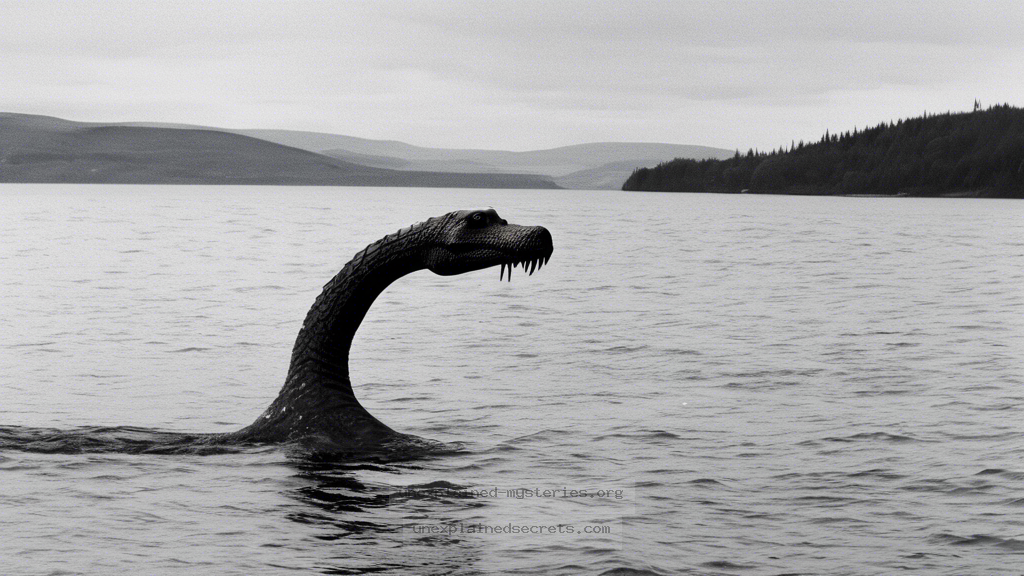What Secrets Does the Loch Ness Monster Still Hold After Decades of Investigation?
What Secrets Does the Loch Ness Monster Still Hold After Decades of Investigation?
The Loch Ness Monster, often affectionately dubbed “Nessie,” has been a figure of intrigue and mystery for nearly a century. The allure of a creature lurking beneath the dark waters of Scotland’s Loch Ness captivates both casual observers and dedicated researchers alike. But why does the legend of Nessie endure when so many investigations have yielded little concrete evidence? This question matters not only for cryptozoology enthusiasts but also for understanding human fascination with the unknown and our willingness to explore the boundaries of scientific inquiry. In this post, we’ll delve deep into the enigma of Nessie, examining historical accounts, scientific investigations, and the implications of this enduring mystery.
Historical Context: The Legend of Nessie
The Loch Ness Monster’s legend dates back centuries, with some references appearing as early as the 6th century. The most famous account comes from St. Columba, who, according to tradition, encountered a “water beast” while traveling through the region. However, the modern phenomenon began in 1933 when a photograph captured what appeared to be a large creature in the loch. Known as the “Surgeon’s Photo,” this image sparked widespread media interest, leading to an influx of tourists and monster hunters alike.
Over the decades, numerous sightings and photographs have been reported, each adding to the mystique of Nessie. From descriptions of a large, long-necked creature to sightings of a more serpentine being, the variations in accounts underscore the complexity of this cryptid. Yet, despite the numerous claims, definitive proof of Nessie’s existence remains elusive.
Core Concepts: Cryptozoology and the Study of Nessie
Cryptozoology, the study of animals whose existence is not substantiated by mainstream science, plays a pivotal role in the investigation of Nessie. Cryptozoologists often rely on anecdotal evidence, eyewitness reports, and folklore to piece together the possible existence of such creatures. The Loch Ness Monster is a prime subject of interest as it encapsulates the intersection of myth, culture, and natural history.
Various theories have been proposed regarding Nessie’s identity, including hypotheses suggesting it may be a surviving plesiosaur, a large catfish, or even a misidentified otter. Each theory reflects the human desire to rationalize the unknown through a scientific lens, even when the evidence remains circumstantial.
Practical Investigations: Scientific Efforts Over the Years
Numerous scientific investigations have been conducted to ascertain the truth behind the Loch Ness Monster. One of the most comprehensive studies took place in 2003 when a team from the University of Edinburgh used sonar technology to scan the loch extensively. They detected over 1,000 potential objects but could not conclusively identify any as a large creature.
More recently, in 2018, a DNA survey of Loch Ness was conducted, analyzing water samples for evidence of unknown species. The study found a variety of fish and other wildlife but no definitive evidence of a large, unidentified creature. These scientific endeavors highlight the challenges faced in exploring a cryptid that may exist in a vast and murky environment.
Alternative Perspectives: Skepticism and Belief in Cryptids
The discussion around Nessie often polarizes individuals into believers and skeptics. Skeptics argue that the legend is a product of misidentification, hoaxes, or the human propensity to see patterns where none exist. For instance, the “Surgeon’s Photo” was later revealed to be a hoax, further casting doubt on the credibility of other sightings.
On the other hand, believers in cryptids often cite the vast unexplored areas of our planet as justification for the potential existence of creatures like Nessie. They argue that if deep-sea creatures can remain undiscovered, then why not a large lake creature? This perspective emphasizes the limitations of scientific exploration and the mysteries still waiting to be uncovered.
Common Misconceptions: What People Get Wrong About Nessie
One prevalent misconception is that Nessie must fit a specific description, often perpetuated by media portrayals. In reality, eyewitness accounts vary significantly, leading to an incomplete understanding of what Nessie might be. Additionally, many people assume that the lack of evidence means the creature cannot exist; however, the complexities of cryptid research often lie in the difficulty of proving a negative.
Best Practices for Investigating Cryptids
For those interested in exploring the mystery of Nessie or other cryptids, there are several best practices to consider. First, a thorough understanding of local ecology and wildlife is essential. Many sightings have been misidentified, so being familiar with the known species in the area can help filter out false claims.
Second, employing scientific methodologies can enhance credibility. This includes using advanced technologies like sonar and genetic testing, as well as documenting findings meticulously. Engaging with local communities and their folklore can also provide valuable context and insights that may enrich understanding.
Future Developments: Ongoing Research and Technological Advances
The future of cryptozoological research is promising, especially with advancements in technology. Drones equipped with high-resolution cameras and underwater drones capable of exploring deeper areas of the loch could yield new insights. Furthermore, the ongoing study of environmental DNA (eDNA) presents an exciting avenue for future investigations, potentially revealing previously unknown species in Loch Ness.
Moreover, the community of cryptozoologists continues to grow, fostering collaborative efforts that could enhance the search for Nessie. This spirit of inquiry, combined with technological advancements, could lead to breakthroughs that bring clarity to one of the world’s most enduring mysteries.
Conclusion: The Enduring Mystery of the Loch Ness Monster
The Loch Ness Monster remains a captivating enigma that continues to challenge our understanding of the natural world. Its legend encapsulates a unique blend of history, folklore, and scientific inquiry that draws people from all walks of life. While definitive proof of Nessie’s existence is still lacking, the journey of exploration and investigation is what makes this mystery so compelling.
As we look to the future, the potential for discovery remains alive and well. Whether through technological advancements, continued research, or a renewed interest in folklore, the Loch Ness Monster will likely continue to inspire curiosity and debate for generations to come. In the end, the true treasure may not be the discovery of Nessie itself, but rather the collective quest to understand the mysteries that nature still holds.
Other Articles
What Caused the Mysterious Disappearance of the USS Cyclops in 1918?
Recent Posts
- What Happened to Flight MH370? The Conspiracy Theories That Still Haunt Us
- What Secrets Lurk Within the Walls of the Infamous Trans-Allegheny Lunatic Asylum?
- What Evidence Supports the Existence of Bigfoot in the Pacific Northwest?
- What Happened to the Indus Valley Civilization? Unraveling the Mysteries of Ancient Urban Life
- Can Telepathy Be Scientifically Proven Through Laboratory Evidence?







